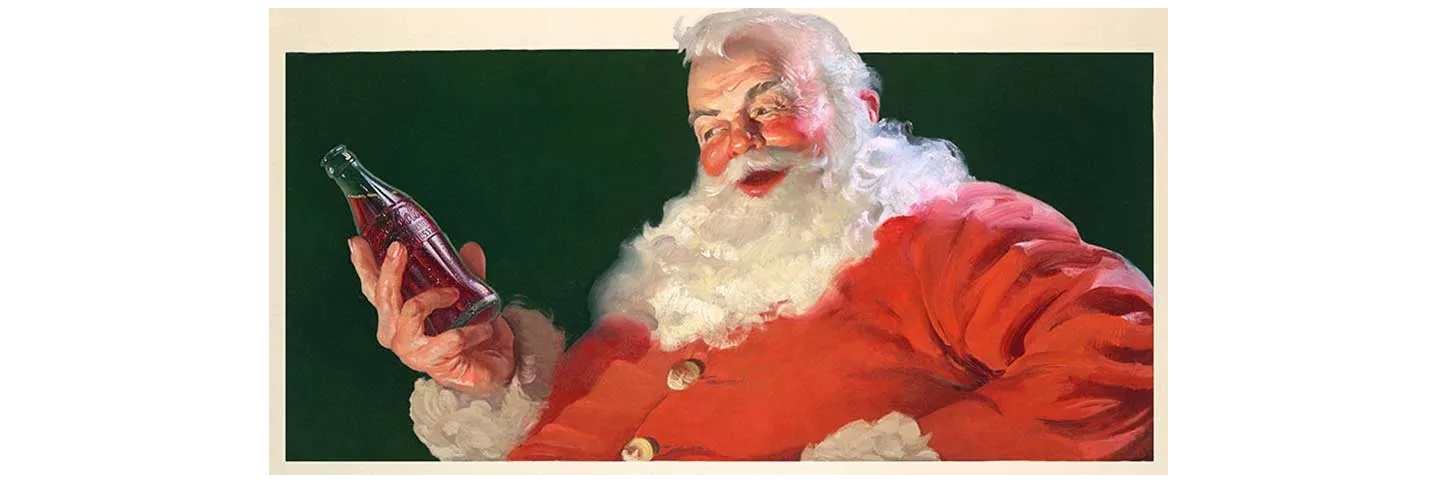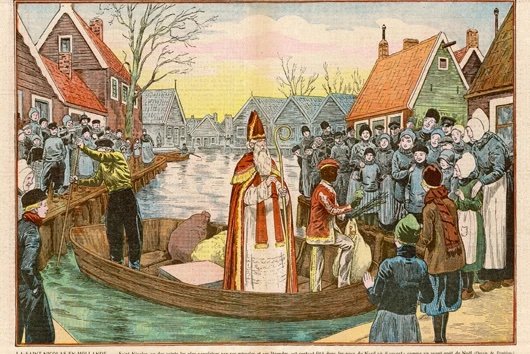The Legend of St. Nicholas: The Real Santa Claus
The legend of Santa Claus can be traced back hundreds of years to a monk named St. Nicholas. It is believed that Nicholas was born sometime around A.D. 280 in Patara, near Myra in modern-day Turkey. Much admired for his piety and kindness, St. Nicholas became the subject of many legends. It is said that he gave away all of his inherited wealth and traveled the countryside helping the poor and sick. One of the best-known St. Nicholas stories is the time he saved three poor sisters from being sold into slavery or prostitution by their father by providing them with a dowry so that they could be married.
Over the course of many years, Nicholas’s popularity spread and he became known as the protector of children and sailors. His feast day is celebrated on the anniversary of his death, December 6. This was traditionally considered a lucky day to make large purchases or to get married. By the Renaissance, St. Nicholas was the most popular saint in Europe. Even after the Protestant Reformation, when the veneration of saints began to be discouraged, St. Nicholas maintained a positive reputation, especially in Holland.
Credit: The History Channel & https://www.history.com/topics/christmas/santa-claus
… and then came the Coca-Cola Company
The Santa Claus we all know and love — that big, jolly man in the red suit with a white beard — didn’t always look that way. In fact, many people are surprised to learn that prior to 1931, Santa was depicted as everything from a tall gaunt man to a spooky-looking elf. He has donned a bishop's robe and a Norse huntsman's animal skin. In fact, when Civil War cartoonist Thomas Nast drew Santa Claus for Harper's Weekly in 1862, Santa was a small elflike figure who supported the Union. Nast continued to draw Santa for 30 years, changing the color of his coat from tan to the red he’s known for today.
Credit: The Coca-Cola Company & https://www.coca-colacompany.com/about-us/history/haddon-sundblom-and-the-coca-cola-santas
Christmas Traditions in the United States
In the United States, Santa Claus is often depicted as flying from his home to home on Christmas Eve to deliver toys to children. He flies on his magic sleigh led by his reindeer: Dasher, Dancer, Prancer, Vixen, Comet, Cupid, Donner, Blitzen, and the most famous reindeer of all, Rudolph. Santa enters each home through the chimney, which is why empty Christmas stockings—once empty socks, now often dedicated stockings made for the occasion—are “hung by the Chimney with care, in hopes that St. Nicholas soon would be there,” as Clement Clarke Moore wrote in his famous poem. Stockings can be filled with candy canes and other treats or small toys.
Santa Claus and his wife, Mrs. Claus, call the North Pole home, and children write letters to Santa and track Santa’s progress around the world on Christmas Eve. Children often leave cookies and milk for Santa and carrots for his reindeer on Christmas Eve. Santa Claus keeps a “naughty list” and a “nice list” to determine who deserves gifts on Christmas morning, and parents often invoke these lists as a way to ensure their children are on their best behavior. The lists are immortalized in the 1934 Christmas song “Santa Claus is coming to Town”:
“He's making a list
And checking it twice;
Gonna find out Who's naughty and nice
Santa Claus is coming to town
He sees you when you're sleeping
He knows when you're awake
He knows if you've been bad or good
So be good for goodness sake!”
Credit: The History Channel & https://www.history.com/topics/christmas/santa-claus
Santa Claus Around the World
Eighteenth-century America’s Santa Claus was not the only St. Nicholas-inspired gift-giver to make an appearance at Christmastime. There are similar figures and Christmas traditions around the world. Christkind or Kris Kringle was believed to deliver presents to well-behaved Swiss and German children. Meaning “Christ child,” Christkind is an angel-like figure often accompanied by St. Nicholas on his holiday missions. In Scandinavia, a jolly elf named Jultomten was thought to deliver gifts in a sleigh drawn by goats. English legend explains that Father Christmas visits each home on Christmas Eve to fill children’s stockings with holiday treats. Père Noël is responsible for filling the shoes of French children. In Italy, there is a story of a woman called La Befana, a kindly witch who rides a broomstick down the chimneys of Italian homes to deliver toys into the stockings of lucky children. There is also the Dutch historical story of Sinterklaas the noble Santa Claus figure, and his mischievous minstrel sidekick Zwarte Piet.
Credit: The History Channel & https://www.history.com/topics/christmas/santa-claus
Santa Claus: Real Origins & Legend
Santa Claus—otherwise known as Saint Nicholas or Kris Kringle—has a long history steeped in Christmas traditions. Today, he is thought of mainly as the jolly man in red who brings toys to good girls and boys on Christmas Eve, but his story stretches all the way back to the 3rd century, when Saint Nicholas walked the earth and became the patron saint of children. Find out more about the history of Santa Claus from his earliest origins to the shopping mall Santas of today, and discover how two New Yorkers—Clement Clark Moore and Thomas Nast—were major influences on the Santa Claus millions of children wait for each Christmas Eve.
Credit: The History Channel & https://www.history.com/topics/christmas/santa-claus











